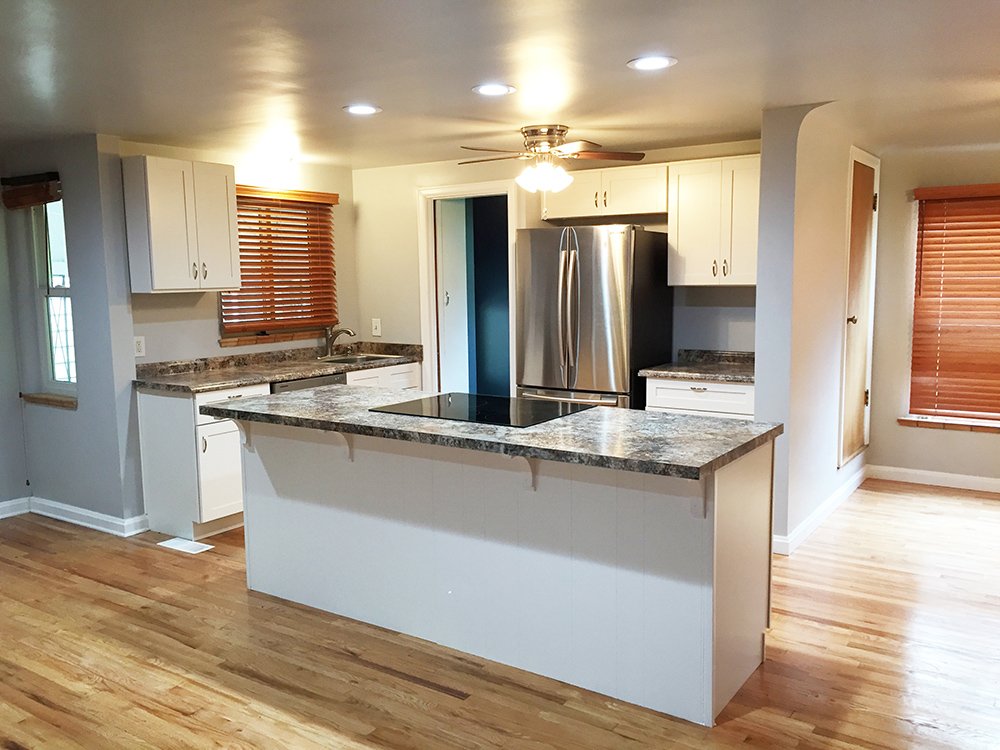Once granite countertops in Minneapolis MN have been properly installed, most do not have to be sealed because by the nature of granite, it naturally resists dirt and common spills which, on other surfaces, can cause etching and staining.
Granite, simply by its nature, is moisture resistant, but it is also porous. It is the porosity issue that most people cite when deciding to have their granite tops sealed. The sealant will block any liquids from coming into contact with the granite, when properly sealed; one will see how the liquid beads on the surface.
Any liquid with color can be devastating to granite countertops in Minneapolis MN. Grape juice and red wine are particularly notorious for staining the stone, however, cooking oil and fat can be just as bad. A genuine issue is a pizza box, the oils will soak through and they will go straight into the granite countertop.
In areas which will eventually be the home of the sink, faucets, built-in hob etc, the sealer should be applied before these items are installed. This is also true of areas where the appliances will be situated, you may not be able to reach these areas in the future but liquids certainly can.
To be on the safe side, granite countertops should be sealed one every year, this being nothing more than a guide. Some granite is considerably more porous than others and if your countertops are that way, then sealing should be carried out more frequently. It is rather easy to determine when the top needs sealing; drip water onto the surface, if it beads up, there is no need to seal yet, however, it soaks in when it is time to seal the surfaces.
Sealing the surface of the granite countertop is something that any homeowner can do. Make sure you purchase a high grade cleaner and a sealer that is designed to be water repellent and resistant to oil-based liquids. Make sure the granite is dry before you start, follow the instructions. There are some sealers that have a solvent base, these are good for several years and are worth using.
Seal the surface in small patches, allow the sealer to soak in and then apply a second coat. Move to the next area and repeat until the entire surface has been sealed.


